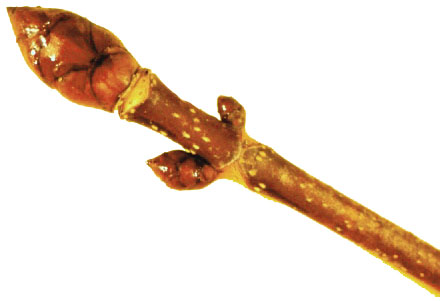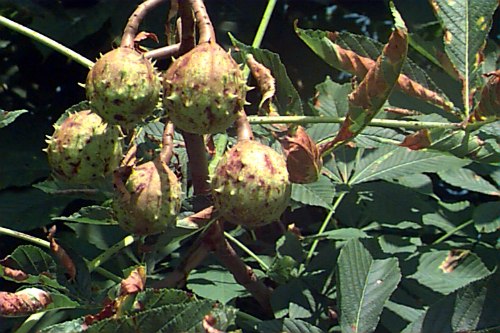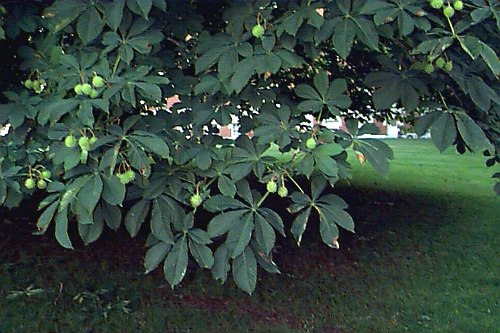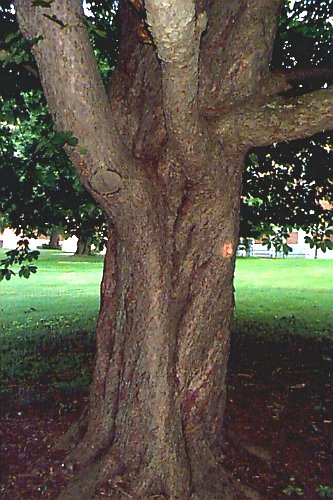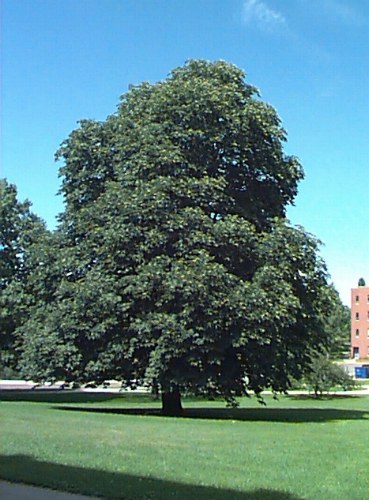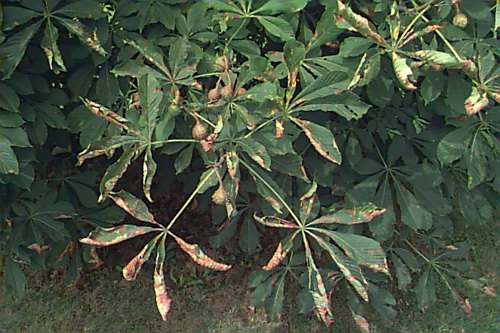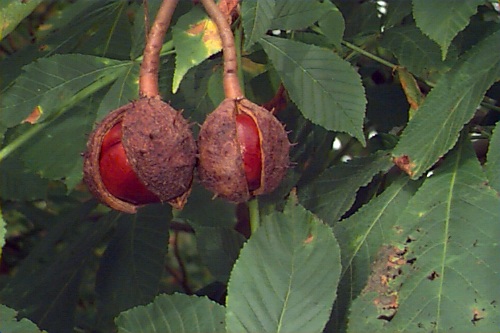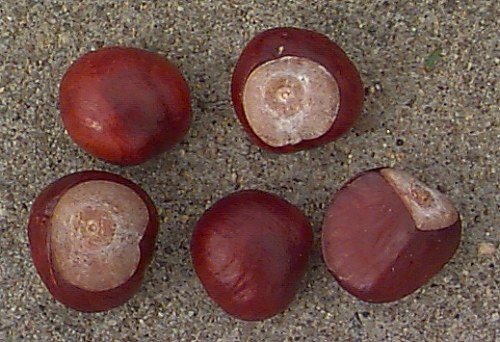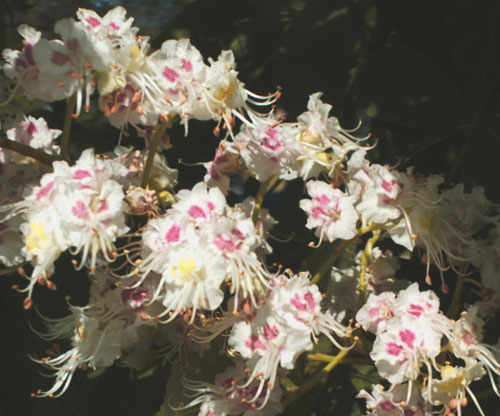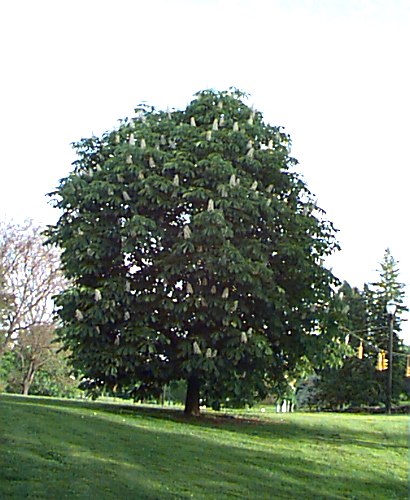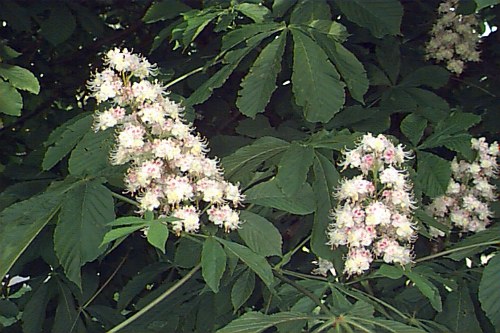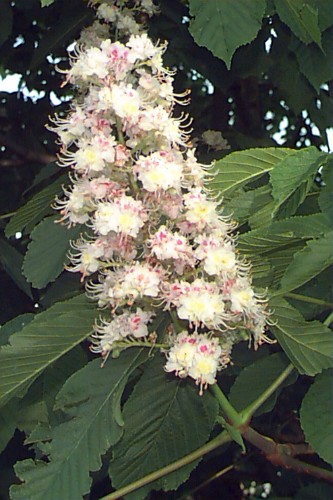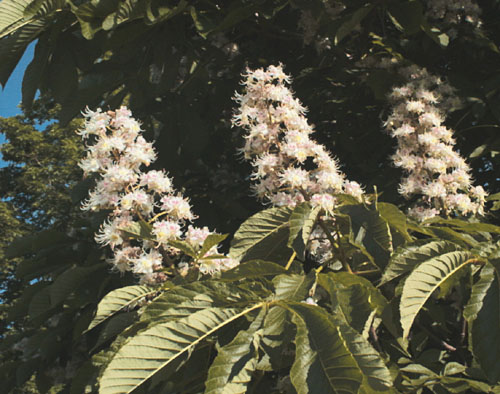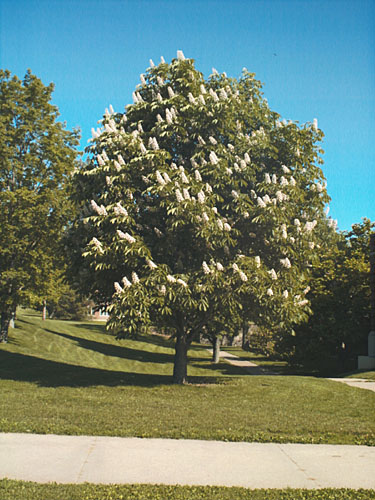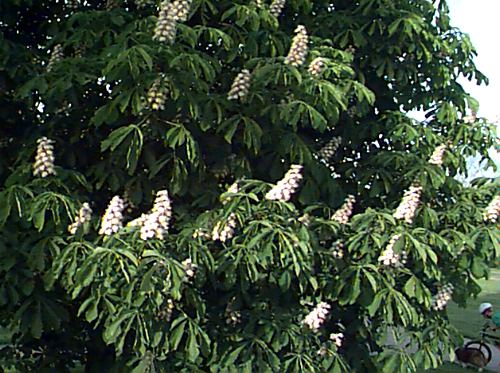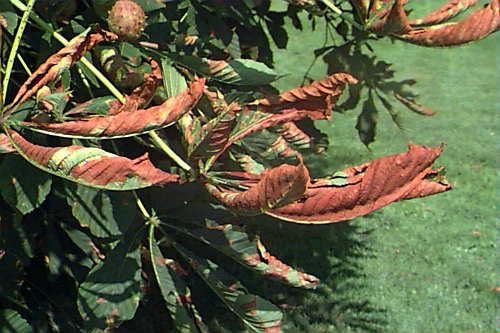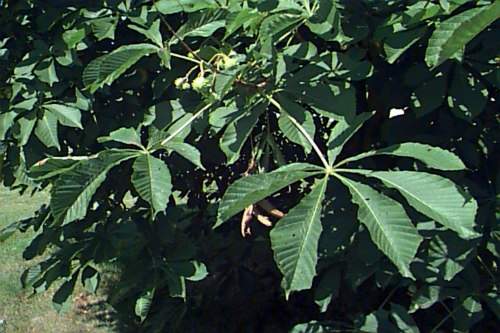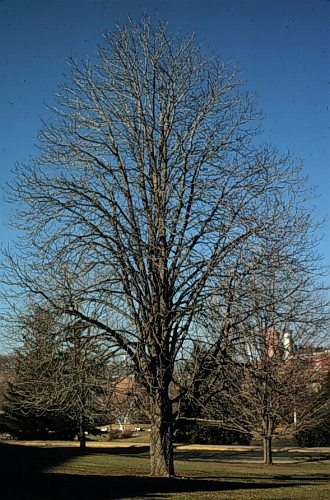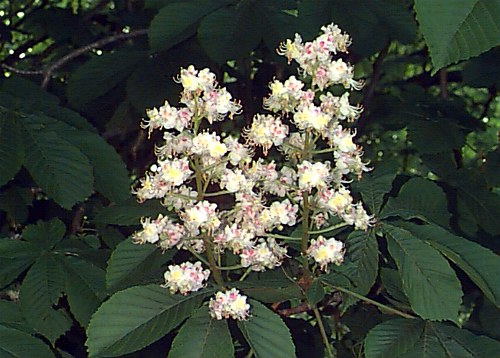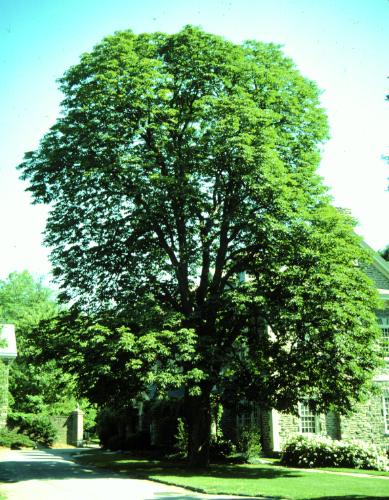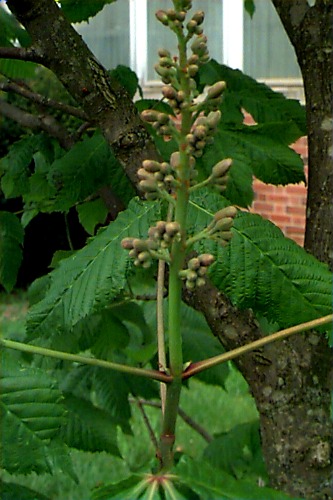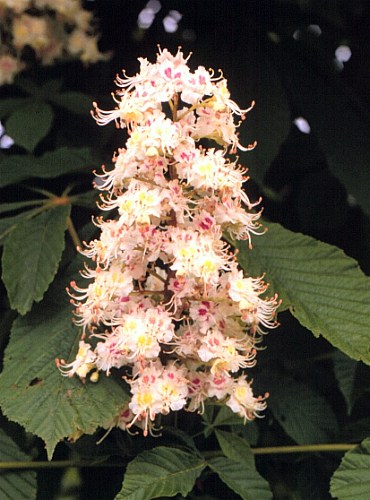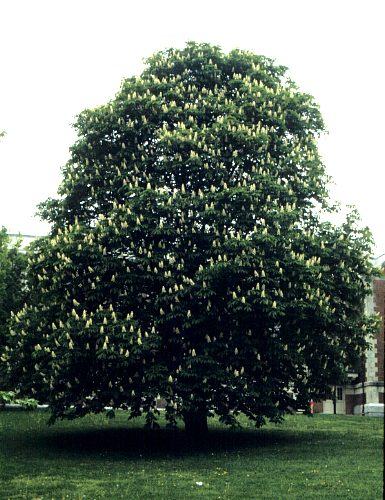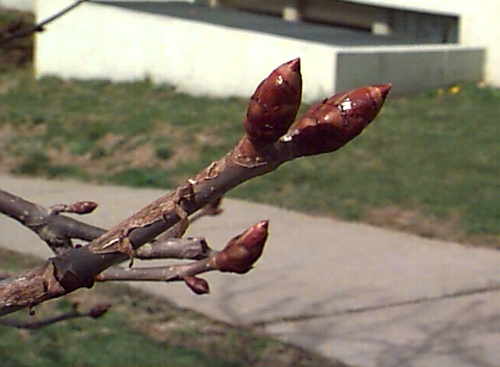Aesculus hippocastanum
Common Horsechestnut, European Horsechestnut
Hippocastanaceae
ExpandHabitat
- native to Greece and Albania
- found in mountainous regions
- zone 3
- commonly cultivated throughout temperate zones
Habit and Form
- a large, deciduous flowering tree
- texture is medium to coarse
- commonly 50' to 75' tall, but 100' specimens are possible
- upright-oval to rounded form
- almost all specimens I observed were taller than they were broad
- lower branches hang down with branch tips turning upward
Summer Foliage
- opposite, palmately-compound with 7 leaflets
- each leaflet is 4" to 10" long and obovate with an acuminate tip
- leaves are light green as they unfold and turn dark green at maturity
- veins are impressed in the leaflets making them appear corrugated
- leafs out early
Autumn Foliage
- poor yellow or just brown
- often leaves are so scorched and blotched that good fall color is not possible
Flowers
- very showy, reaching a peak in mid-May
- white with a blotch of yellow and red color at the base
- terminal panicles, 5" to 12" long and 2 to 5" wide
Fruit
- 2" to 2.5" diameter capsules with 1 or 2 seeds
- has a dehiscent, spiny husk, light brown in color
- matures in September and October
- kids love to collect up the seeds and use them as they see fit
Bark
- exfoliates in plates on older branches and the trunk to reveal showy orange bark underneath
- most of the bark is dark gray and brown
- interesting feature
Culture
- full sun is best
- prefers a roomy soil that is moist, but well-drained, but fairly soil adaptable
- transplant B&B or from container
- avoid hot, dry locations to minimize leaf scorch and other problems
Landscape Use
- good in parks, on campuses, in arboreta, large public areas, golf courses, etc.
- needs room to develop growth
- somewhat overused in parts of the eastern United States
- good for shade and also decoration (flowers)
Liabilities
- there is a tendency to overuse this species
- fruits can be messy
- large and cannot be used at small residences
- leaf scorch and blotch can be serious problems and occur to some degree nearly every year
- powdery mildew
- young leaves and fruit are considered poisonous
ID Features
- large, resinous buds, reddish brown
- large, 7-leaflet, palmately-compound leaves
- leaves have impressed veins
- fruits are the most spiny of all Aesculus
Propagation
- by seed
- cultivars are grafted
Cultivars/Varieties
'Baumannii' - Rather impressive form that has double white flowers. The double flowers last longer than single flowers and do not produce fruit. No fruit litter mess and therefore a good improvement over the species.
